Growing Things – Paul Tremblay

GROWING THINGS And Other Stories
TITAN BOOKS 2019
My previous reviews of Paul Tremblay here: https://dflewisreviews.wordpress.com/tag/paul-tremblay/
When I read this book, my thoughts will appear in the comment stream below…


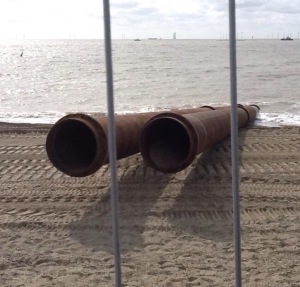 —> Page 72
—> Page 72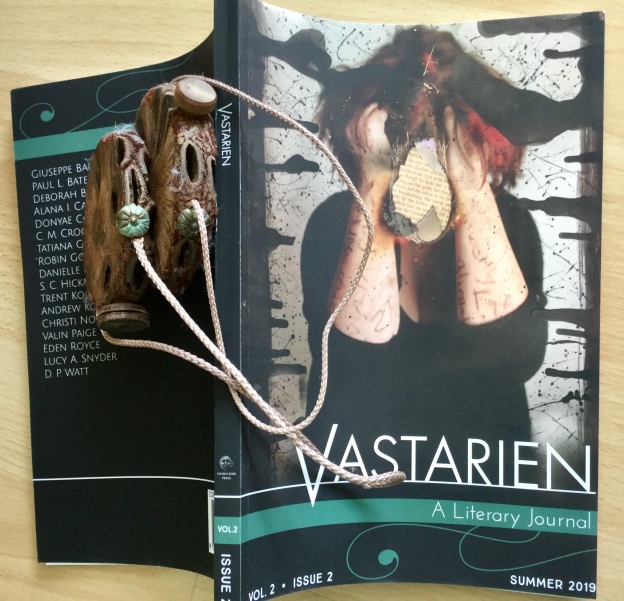
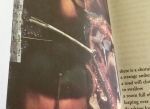 An illustration (part of it left) by Danielle Hark
An illustration (part of it left) by Danielle Hark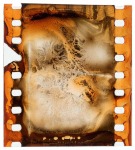
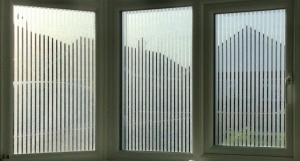
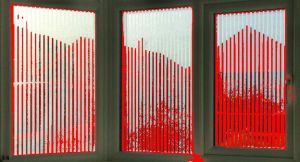 Also preternatural mutual-synergies with the previous Royce story just reviewed above, the
Also preternatural mutual-synergies with the previous Royce story just reviewed above, the
“Merry cannot verbalise this, but the idea of a world where people disappear like days on a calendar is what truly terrifies her,…”
A mutual-synergy with Tem’s Book of Days (here). Merry is the youngest of two sisters, the older 14. Mother already gone, and the Father has just abandoned them, we infer, in a world where stories the older one tells, amid a house invaded, tell only of the growing things from the basement intertwining with such stories. A world in ungainly end-growth using these growing things as a trope for a squirrelly monkey bite. An insidious story outside the older then younger sister’s stories that it grows within it of truth and exaggeration. Green dresses and dirt clumps. The invaders: AMERICA FIRST, New York, its buildings…?
“Story first. Story first.”
====================================
…and from those stranded steps, across that trembling gap…
Swim Wants to Know If It’s as Bad as Swim Thinks by Paul Tremblay“It was like being in a giant dollhouse. […] eleven steps down into a basement,…”
Not a House of Leaves as such but a type of Molly’s Monologue where the stream of consciousness is a tenuous audit trail from the previous stepping into nothingness, and now grasping for some handle on events through an internet nickname’s job as a supermarket cashier, and her estranged daughter she rescues from some monstrous apocalypse … all the time wondering whether the apocalypse is real or in her head. A very impressive piece. Surely to be worth the price of this book alone.
======================================
Something About Birds
by PAUL TREMBLAYTHE NEW DARK REVIEW PRESENTS “SOMETHING ABOUT WILLIAM WHEATLEY”: AN INTERVIEW WITH WILLIAM WHEATLEY BY BENJAMIN D. PIOTROSKWI“…and I have to admit, when I first read the story, I didn’t see the word “Dad” there. I was surprised to find it on the second read. Many readers report having had the same experience. Did you anticipate that happening?”
An interview, threaded through with Facebook social media interactions, an interview with an author plus concocted interwoven afterword about the interviewer’s favourite story-of-many-interpretations entitled “Something About Birds” by the interviewed 75 year old author. The gestalt has a ritualised ‘eyes wide shut’ or Fowles-Magus syndrome, one whereby I, too, tussle, by implication, with bird mask, beak, talons and nudity.
But who eclipses whom?
“That’s the true power of story. That it can find the secrets both the writer and reader didn’t know they had within themselves.”
(And what about Mr H____ and Kittypants? Perhaps the rest of this book will inadvertently help me?)
“…Greg was always getting odd looks with his too-small-for-his-face eyes and a mouth like a cut on his face…”
The narration of a getaway car and those men in it, after a heist. We get hints of their young backstory in the town they still call Wormtown. No way I can say much without spoiling it. A sort of gory tontine with echoing guns. The narrator driver’s dumber brother at home being the winner of that tontine, I guess! Reviewing a story as if in a real-time rearview mirror…
“And it’s ironic that the original or true colour of the photo album page was preserved by the photo, preserved by that piece of the past.”
A one-by-one real-time submission by the narrator to you, whoever you are, of photos of a family on holiday years ago in the 1980s, when he was a small boy, well-characterised numbered thumbnail summaries he submits to you, including the suspicions they had of their Dad in and out of a motel nearby. The gestalt you draw is a telling, if tantalisingly inconclusive, one. Sometimes photos when they get older turn yellow. Depends whether they are black and white originals or already colour. Yellow stays yellow, whatever the colour of the album’s pages.
“Yellow letters and symbols overlap and blur.”
==========================================
Where We Will All Be by Paul G. Tremblay
“The news ticker at the bottom of the screen is unreadable. Yellow letters and symbols overlap and blur.”
On the macro level, a page-turning SF ‘disaster’ apotheosis of the flashmob diaspora. On a micro level, the disconnect between parent and child, adopter and adoptee. On this double review’s level, a story of the loner who survives simply because he is a loner, a loner because he is different…escaping that Gailestis river, a river within the sea… The blue star now a high-beam symbol.
“The crowd bears his weight like he’s not there, like a river carrying a log.”
“Right there, in the middle of my stir-fry, I make a solemn promise to never color my hair auburn or wear a yellow sweatsuit.”
…like the narrator Kate’s mother does. Meanwhile, this is a remarkable work of insidious horror depicting the mœurs of teenage kids on electronica like Snapchat, and sexual gossip, and looking up to a particular teacher. But his ways of conniving with his pupils is to be seen as cool and transgressive like them, and they gradually realise how OVERcool he is! With the videos he shows them. And the Zeno’s Paradox half upon half accretion of a flung child approaching a wall, or Kate her future. A process similar to the earlier accretive series of Dennisport snapshots. A sort of growing things but never fully.
From the start, I was not in the mood to cope with this pseudo-experimental in-joke. Perhaps BARN, as a shortened form of its dedicatee’s name, meant it was all retroactively cursed.
It hurts me to say so.
“Whatever strange act we’re spontaneously creating together, it’s wrong, very wrong, but my head is pleasantly drunk with it”.
…reader and writer together, that is, and not sure to whom the last bit applies, as I think of the beach-fanciable, yearningly half-memorable, woman at the end vining (sic) the male narrator’s own car home for him and his two children, children in the back, yes, children, but children very soon to be growing up when seen changing out of their swimsuits on the beach, I guess, and what SHE retroactively turns this story into. What she also retroactively turns the children’s mother and the narrator’s wife into, when they all get home to her amid the circles of other such families around. There is nothing I can underline further than that it all haunts me with its socially empty implications. Fine oblique horror stories like this one represent the best way to emphasise the otherwise unemphasisable, to empathise with the otherwise unempathisable.
“The monster is the id. And the ego. It’s philosophy, and religion, and collective will. It’s you, me, them. It’s us.”
…said with a schoolchild’s wisdom, as his fingers and thumbs jab at a playmate screen. It’s also the airbrushed ‘nemo’, I say, the monster between the id and ego (see Fowles below), the suddenly desert-surrounded town, those teachers airbrushed as the previous story’s “_____________”, always the last teacher’s last, or lust, that young couple perked by porn at the edge of the swamp where all joke the monster lurks. A genuinely classic portmanteau fable, making a town, the monster, the final trump, I guess. The realtor with the mostest. Arguably a work of a last genius. I have only mentioned parts of the portmanteau above. The gestalt prevails, though.
“He explained earlier that the desks were small because people back then were smaller.”
=======================
“The nemo is an evolutionary force, as necessary as the ego. The ego is certainty, what I am; the nemo is potentiality, what I am not. But instead of utilizing the nemo as we would utilize any other force, we allow ourselves to be terrified by it, as primitive man was terrified by lightning. We run screaming from this mysterious shape in the middle of our town, even though the real terror is not in itself, but in our terror at it.”
— John Fowles 1964 (from ‘The Necessity of Nemo’ in ‘The Aristos’)
“Fiona rearranges the book’s in the built-in floor-to-ceiling bookshelves: first alphabetical by author, then by title, then by color.”
I genuinely believe this to be a classic, Proustian ghost story, as Fiona revisits the family house in a fighting-fantasy or choose-your-own path-to-adventure algorithm of exploration, summoning the ghosts of her family and THEIR ghosts they once saw or felt in various cupboards or rooms. This is wholly frisson-inducing, paradoxically both cosy and chilling, with memories now seen in a different context where the implications of this book’s erstwhile retroactivity curses again. Or does it? Do we all curse ourselves retrocausally, at the end of the day? Haunt ourselves? This is where fiction experimentation truly works. A “beyond-adult”, not elderly casting back, dreamcatching, träumtrawling, hawling…. where go to now, who be, whither be?
(Photo by P.F. Jeffery, who also recently painted each individual hat green.)
“The postmark date was six days before he killed himself, four days before I left to go to the event in Providence.”
More growing things. And I can see why a writer friend struck me as being the retroactive curse at the end of the BARN work above. It all now makes sense retroactively from here! This work is a cross between the accretive snapshots of Dennisport and the Zeno’s Paradox video-shots in ‘The Teacher’ and the retrocausality in this book’s previous story, while factoring in, from outside this book, the splodge-stain in the ‘Again, Dangerous Visions’ Gahan Wilson story. A work about a writers’ convention and of a gestalt’s jigsawing…. a work that works well despite the writerly in-jokes. (Gahan Wilson’s story also has a title as a shape rather than a word, cf “___________”)
“It occurs to me that part of the appeal of being a member of your madly merry band of enthusiasts is the noble promise of the obscure, overlooked, under-appreciated-in-her-day horror writer: your colleagues and compatriots will champion her work and they will sing her song loud enough and often enough that it will forever echo in the halls of horror.”
…hence the earlier curse of retroactivity now here in the body of the work. Meanwhile, this novella is truly magnificent, yet also rife with all those writerly in-jokes or in-sadnesses I descried earlier in this review. Those in-references are now transcended here by some of the strongest writing I have ever read in such a mode of literary (mis)behaviour. It starts as another insidious GRADUAL growing-thing in itself, the author employing an agency of dog-walkers for his dog Holly (his “fur child” as the agency references it), and the dog-walkers write a report of each walk that they each take, and we get to know the handful of walkers by name, as they sign off each report about Holly’s behaviour, its pee, and poop, and slowly, GRADUALLY, almost by Zeno’s Paradox, they speak of themselves deeper and deeper vis à vis their visits to the author’s home with Holly when he is out, and we also get to know them as they address world politics, global warming, and eventually prying into the author’s own book collection in the house as well as the author’s own genre publications in the horror field. Interconnections, plotlines, genre politics, in fact a triangulation of the coordinates by real-time reviewing towards a gestalt. I was staggered by the latter synchronicity and by the description of “bookshelf-dowsing” and “bibliodivination”, and the shelving nature of the shelves of his books (a shelving subject that I seem to have predicted by quoting somewhere above in this review how someone else shelved books!) There is so much I could quote so as to demonstrate my understanding and appreciation of this work, amid some to be borne-out repercussions for my reviewing processes and the projection of a gestalt iconicity by different means. Striving to explain the inexplicable, by hawling, träumtrawling, dreamcatching the ambiguous horror of it all. Building a universe, beyond even the usual connections between a single author’s books with characters and plots, all factored into by the real-life interconnections and rivalries of all the authors themselves. But does this include building a universe for ALL books by ALL authors, as an ultimate ambition, I ask? But none of this literary rarefication – nor any potential controversy (personal or otherwise) – seems to diminish the strength of Tremblay’s dog-walker and reality-checker concepts themselves (with all his descriptions, and his brilliant wit about the walkers’ prying impertinence, pretentiousness and paranoia) and the supremely strong writing that develops, whether it be the strong writing and wisdom of the dog-walkers themselves as the reader builds up their characters OR some preternatural power dog-walking THEM!
And, as a line-break, who stalks the stalker? And was it all a dream? “Pee: ✓ Poop: ✓✓✓”
Then I assumed it was something to do with Dr. Caligari. Now perhaps it’s Alexa!
=================================
FURTHER QUESTIONS FOR THE SOMNAMBULIST by Paul Tremblay
“We will ask our questions and we will have our answers no matter the answers.”
Something defiantly experi-mental about this presentation of three vertical parallel lines of questions – suitably stepped for overlapping questioners and us readers – the columns being headed ‘a woman’, ‘a man’ and ‘a child’. Perhaps the ultimate existential incantation. As well as a child’s fearful side of things in the sexual plague of yearning madness it has caused in our society? Potentially terrifying. Sleepwalking into a spreadsheet.
Spooked with spikes, this is a treat from Mr Horror Ambiguous, with a woman, I take it, who once nursed a rabbit as a child, now nursing the vision of the ice tower, integral as a tower despite the warming, and of the climbers and Sherpas she seems to be with, and of the fact that even snow and ice can be stuffed with hot weather flies. And skin needs crampons to bite and notch against the grain of the pores so as to climb that skin and kiss the mouth. To love. To memorialise the unaccountable dead among her past and present. More anti Arctic that Antarctic, I’d say. Inverted icicle or not. And when I read this again tomorrow as if for the first time, I might have a completely different interpretation. Or it might have a completely different message to BE interpreted. Words melt and morph overnight, I reckon, even printed ones. Even its penis jokes. Or the arrival of Sam’s green army.
“We don’t know if there’s some sort of coincidence or connection there, like there’s a special power to the Society’s story, like the act of telling it makes things fit,…”
A monster as metaphor is one common thing in horror works, in how horror works. But we now need a different word to ‘metaphor’, because the monster here transcends its own metaphor, and eats it, in my book. I don’t know how that works. But it does. The group of four children who are picked out for special schooling attract bullies to dent their van, but does this Society the foursome forms inadvertently summon the monster to the alley to punish those kids that bully them or is the Society a transactional monster or monster apologist, or is it really the monster’s victims, too, as we all are from the monster formed from the space created by the dents in our childhood, a space that we take around with us all our lives in wider Society itself, from alley to alley, even in the so-called bright places, and the four elements of fire, air, earth and water. The Brazilian dent, too, explicitly mentioned here, and the “arms as long as firehoses” of the monster…
“Ever eat a Q, Gemma?”
“His mouth became an O.”
A skillet pan, or a hammer? To make the hand red. This is a tale of a girl whose father has become a bad seed, steeped in a bottle of whiskey within the fortress of self, and her mother gone, her going Gemma’s guilty conscience. Brought to this cabin by her parents, near a legendary well, and a well goblin, and Gemma’s sketching GRADUALLY again, becoming rectangles of a comic strip of Hellboy versus that goblin, the red hand originally her mum’s hand, now a weapon on Hellboy’s. All writ out like batter script. Loved it, but don’t know why. Often the best way to know something. Then, down by the grass, Gemma writes a capital G.
“Stacks of green paper in his
Red right hand”
— Nick Cave & the Bad Seeds
“Tom has a green piece of paper and is writing something down on it.”
And Danny, Tom’s small son, has what he sees as a magic piece of yellow paper. Daddy pulls him off the shelf like a melon, not a book. Actually, this starts as an ordinary holiday trip of a foursome family into the wilds with only small communities in the area. Beth, Danny’s sister, is still so small she can hardly yet walk; she may in fact be someone Danny calls Hardly Anybody? He needs to keep feeling her face to make sure she is still there, under the guise of keeping her awake in the car? Emma, the mother, has the belt and braces syndrome of a constant swimsuit with T shirt and shorts on top. Something is GRADUALLY threatening them? News reports that they keep away from the children? Something invasive we can only infer, but, if so, is it Danny’s magic thoughts causing it instead? Something slowly devastating about one’s breaking of even trivial laws in such circumstances. And I come away from this story feeling that I have been transgressive as a reader even attempting to understand its GRADUALISMS. Something about this whole book being self-sufficient by concomitant use of readerscreen as well as sunscreen. Paradoxically increasing the number of its readers because such readers perversely want to break its disarmingly oblique laws.
I’ve tried. I really can’t get on with this story. It just isn’t going in right; I really don’t like obvious spin offs such as this, specially a spin off of a book that is already in my blurred sump of an aged mind. This story is perhaps this book’s final retroactivity of curse? One that, if you don’t reach, makes the book better? Please forgive me. My thoughts on the penultimate story above must serve as my clinching gestalt of this whole book BEFORE real-time brought me to this final aberration. In that way, it remains mainly what it is: a great book with a haunted staying-power, a study in horror.
“Oops, Merry is female. Sorry.” — from my review in 2015 of A HEAD FULL OF GHOSTS here.
I will now read, for the first time, the author’s story notes.
end